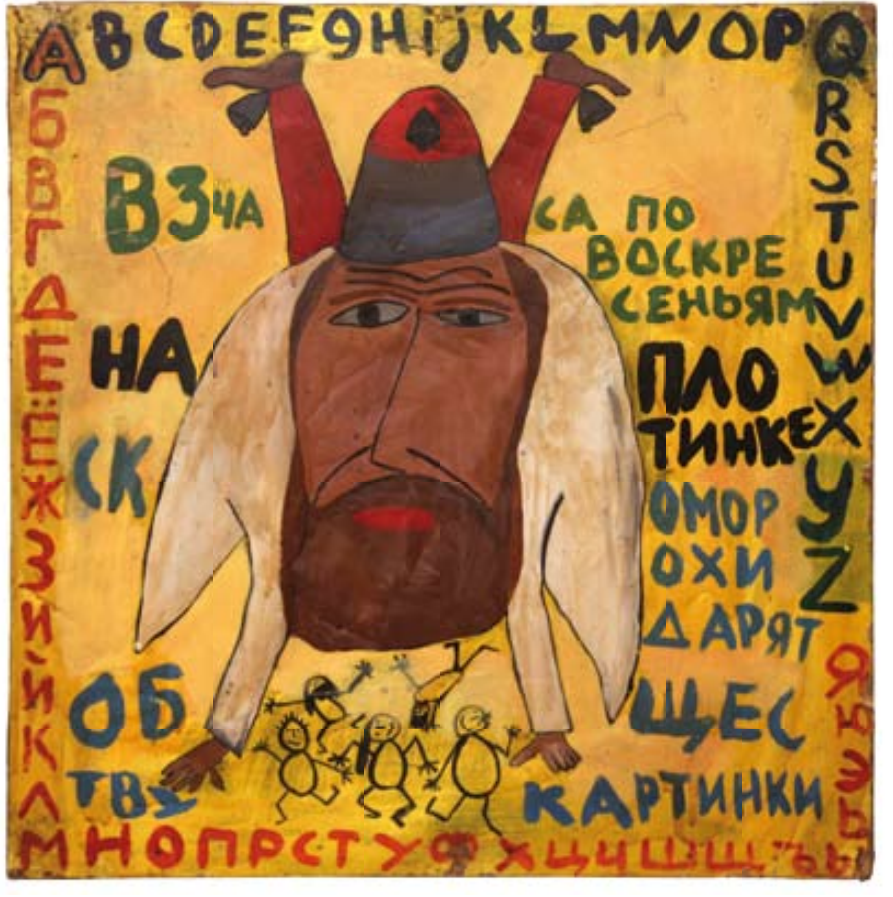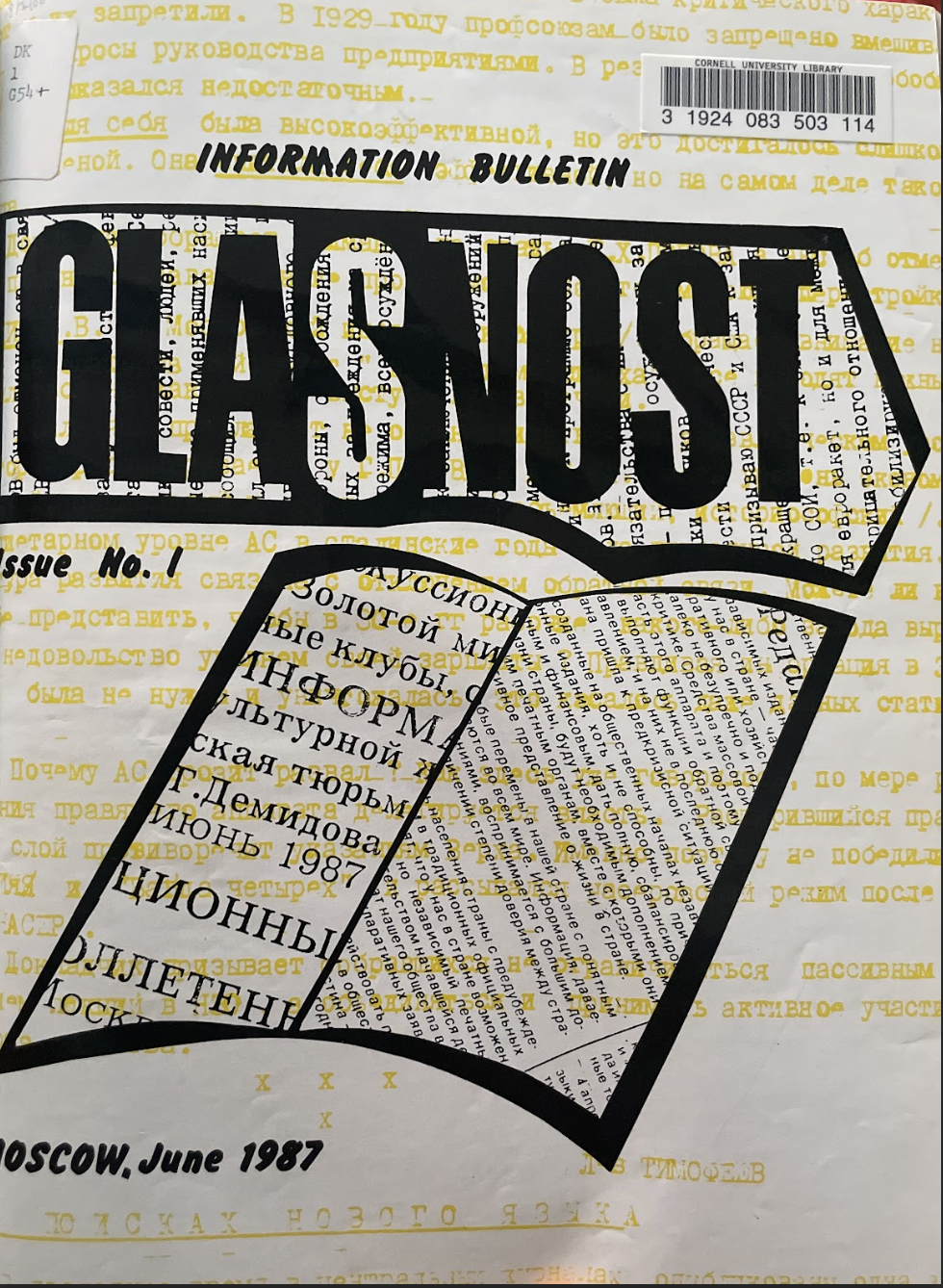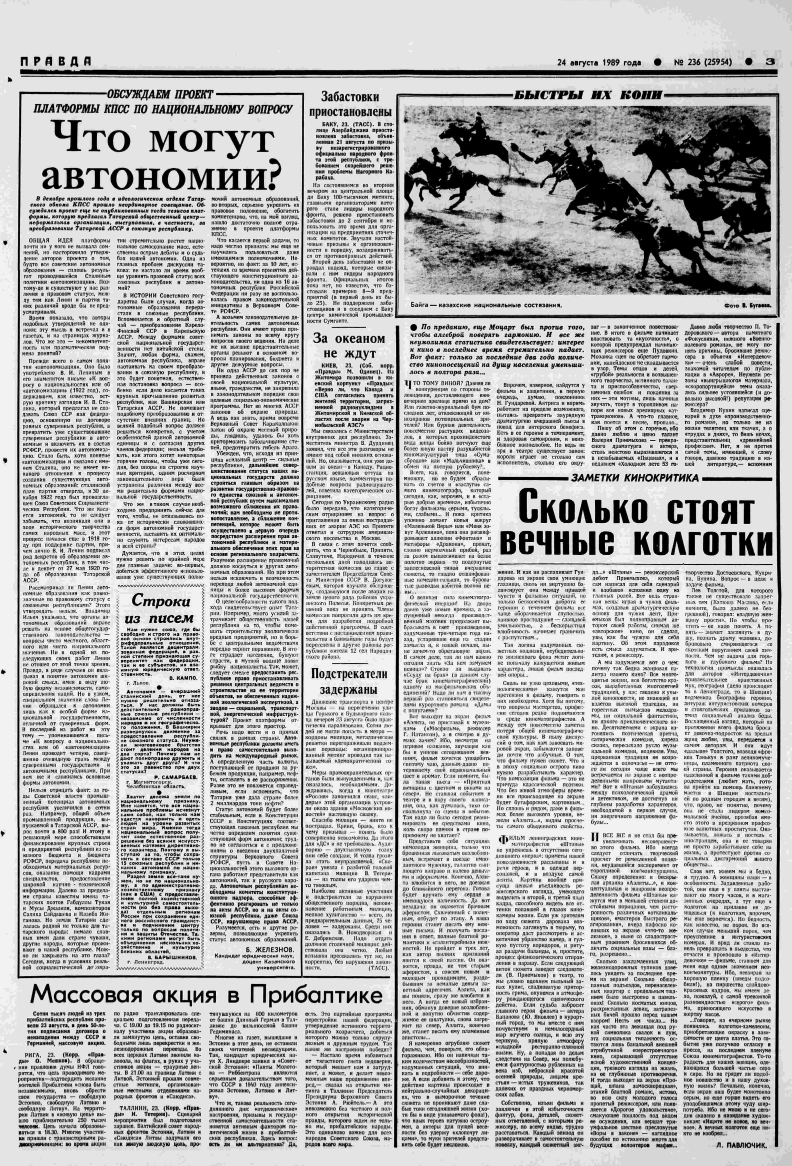Search Results
Search Terms
Results: Displaying Artifact 13 - 18 of 21 in total
Text Containing:
Page: 3
Thematic Tags: Dialogue
"At 3 PM on Sundays, at the Dam, the jesters [skomorokhi] will gift society with pictures!", 1989
B.U. Kashkin's circle created outsider art in various media, but especially painting, distributing it to the public during their Punk-Skomorokh performances. B.U. Kashkin encouraged amateur artists to experiment with public art.
"Glasnost. Information Bulletin"
The front cover of Glasnost. Information Bulletin from 1987, along with the Editor’s introduction to the first issue. One the first self-published journals to be released during perestroika, Glasnost was an early instance of the fledgling independent late-Soviet press.
Gorbachev's speech on socialist democracy
A 1987 speech by Soviet Communist Party General Secretary Mikhail Gorbachev (1931-2022) on the significance of his signature policy, perestroika.
Human Chain Across the Baltic Republics
Pravda’s (1911-) coverage of the Human Chain on 24 August 1989, documenting the previous day’s political action by hundreds of thousands of Lithuanians, Latvians, and Estonians, who linked together in a 600-kilometer-long “living chain” (zhivaia tsep’) that stretched from Tallinn, Estonia to Vilnius, Lithuania.
A reader question to "Literaturnaia Gazeta"
During perestroika, the Soviet government encouraged media to foster closer ties with citizens, leading to unprecedented reader engagement and evolving perceptions of press independence. In this June 1988 issue of the national weekly Literaturnaia gazeta, a reader objects to the editors’ choice to send a copy of his letter to the Party Central Committee.
"Program and Charter of the Leningrad Club of Friends of 'Ogonek'"
Formed in 1988, the Leningrad Club of Friends of Ogonek Magazine (KDO in Russian), exemplified perestroika-era grassroots media engagement. Soviet citizens supported and shaped the reformist stance of the magazine, in print from 1899 to 2020, amplifying its influence through growing circulation and reader involvement in editorial content.





